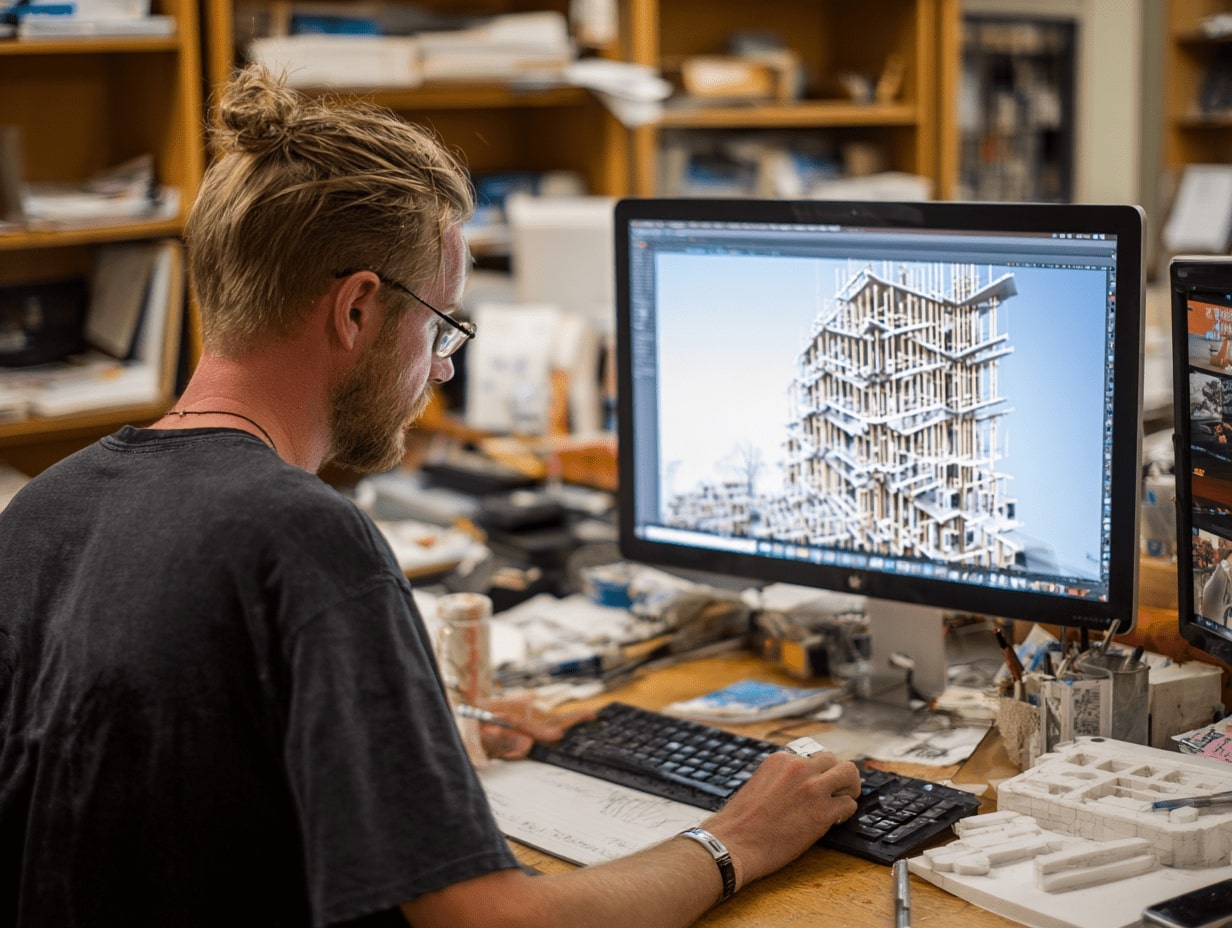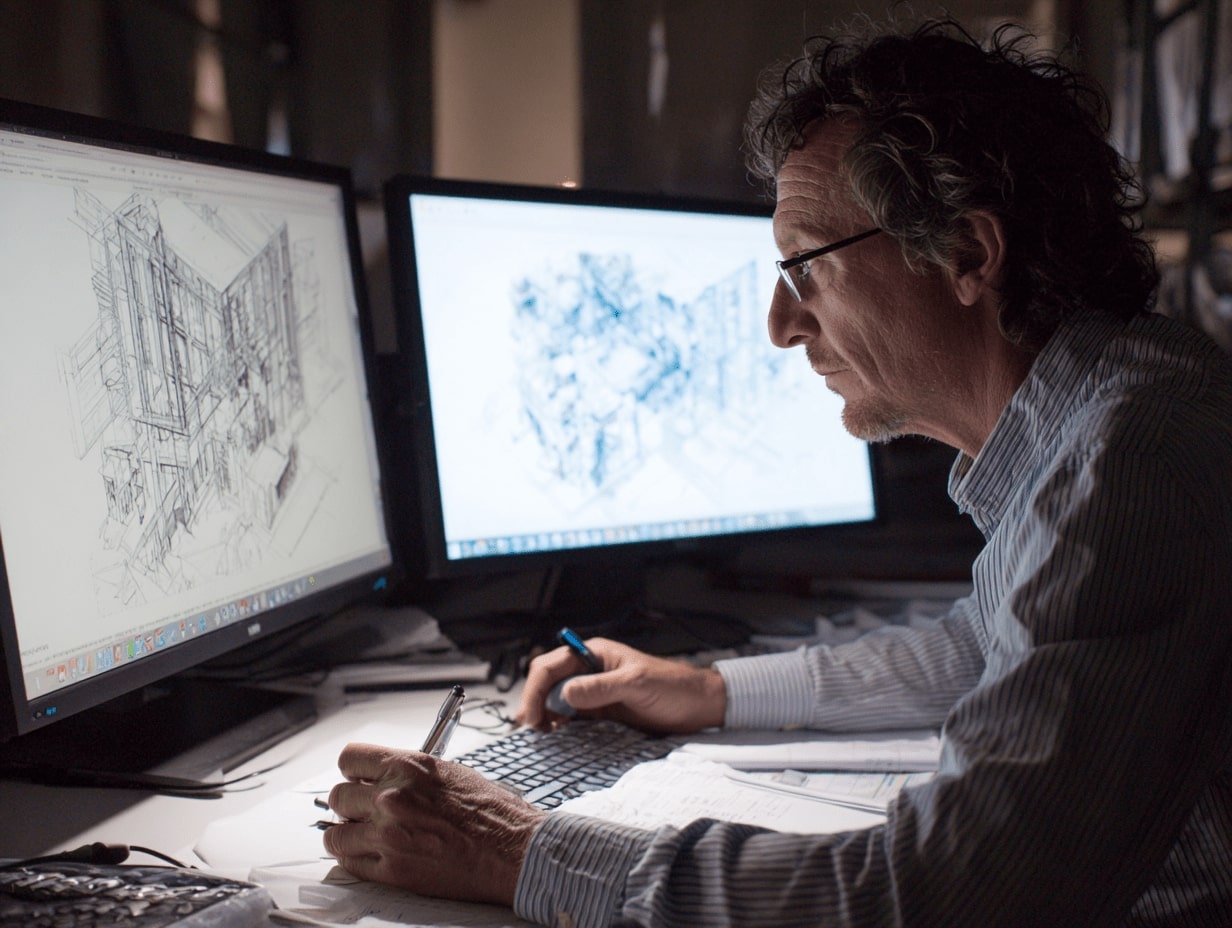- Home
- Articles
- Architectural Portfolio
- Architectral Presentation
- Inspirational Stories
- Architecture News
- Visualization
- BIM Industry
- Facade Design
- Parametric Design
- Career
- Landscape Architecture
- Construction
- Artificial Intelligence
- Sketching
- Design Softwares
- Diagrams
- Writing
- Architectural Tips
- Sustainability
- Courses
- Concept
- Technology
- History & Heritage
- Future of Architecture
- Guides & How-To
- Art & Culture
- Projects
- Interior Design
- Competitions
- Jobs
- Store
- Tools
- More
- Home
- Articles
- Architectural Portfolio
- Architectral Presentation
- Inspirational Stories
- Architecture News
- Visualization
- BIM Industry
- Facade Design
- Parametric Design
- Career
- Landscape Architecture
- Construction
- Artificial Intelligence
- Sketching
- Design Softwares
- Diagrams
- Writing
- Architectural Tips
- Sustainability
- Courses
- Concept
- Technology
- History & Heritage
- Future of Architecture
- Guides & How-To
- Art & Culture
- Projects
- Interior Design
- Competitions
- Jobs
- Store
- Tools
- More
How BIM Is Shaping the Future of Construction: Revolutionizing Design and Collaboration
Discover how Building Information Modeling (BIM) is revolutionizing the construction industry with advanced 3D modeling, data integration, and collaboration tools. Learn how BIM enhances efficiency, reduces errors, promotes sustainability, and integrates technologies like AI and AR/VR to shape smarter, more innovative construction practices while addressing key adoption challenges.

The construction industry is evolving faster than ever, and Building Information Modeling (BIM) is at the heart of this transformation. As we tackle complex projects and rising demands for efficiency, BIM has emerged as a game-changer, revolutionizing how we design, plan, and build. It’s not just a tool—it’s reshaping the way we collaborate and innovate.
With its ability to create detailed digital models and streamline workflows, BIM is paving the way for smarter, more sustainable construction practices. From reducing errors to improving project timelines, it’s clear that this technology is setting new standards across the industry. As we embrace this shift, we’re not just building structures—we’re building the future.

Table of Contents
ToggleUnderstanding BIM: The Basics
Building Information Modeling (BIM) is transforming construction by offering enhanced precision and efficiency. Let’s explore its foundation and development within the industry.

What Is BIM?
BIM refers to a digital process used to design, plan, and manage construction projects. It integrates 3D modeling with data, enabling teams to visualize and analyze every aspect of a project before construction begins. This process goes beyond simple representations by incorporating critical details such as materials, costs, and timelines.
By creating a unified model, BIM helps stakeholders collaborate effectively, identifying potential issues and optimizing resources. For example, engineers can simulate structural loads while architects refine designs, ensuring the final build reflects both technical and aesthetic requirements.
The Evolution Of BIM In Construction
BIM’s journey began in the 1970s with early CAD systems, which replaced manual drafting methods. In the 1990s, parametric modeling introduced object-based designs, laying the groundwork for modern BIM solutions. Over time, software advancements have enabled integration with technologies like cloud computing and augmented reality.
Today, BIM supports multidimensional modeling, including 4D (time scheduling), 5D (cost estimation), and beyond. These innovations streamline workflows across project phases, from design to demolition. For instance, contractors can use BIM data to coordinate schedules, reducing delays and improving onsite efficiency.
Key Features Of BIM
BIM offers transformative features that redefine construction processes. From enhancing visualization to streamlining collaboration, its capabilities support efficiency and sustainability across project lifecycles.

3D Modeling And Visualization
BIM provides detailed 3D modeling to visualize complex structures and layouts before construction. This precision minimizes design errors and identifies conflicts early in the planning phase. For example, clash detection ensures HVAC, plumbing, and electrical systems integrate seamlessly within a building layout.
Collaboration And Data Integration
BIM enables centralized data sharing for seamless collaboration between stakeholders. Real-time updates within a unified model ensure transparency and reduce miscommunication. For instance, architects, engineers, and contractors access identical project data, aligning design decisions and construction workflows.
Lifecycle Management And Sustainability
BIM supports lifecycle management by offering tools to track, manage, and analyze building performance. Accurate material data and energy models promote sustainable design choices. For example, integrating 6D modeling, BIM facilitates monitoring energy efficiency and optimizing renewable resource usage throughout a building’s life.
Benefits Of BIM In Construction
BIM continues transforming construction by delivering tangible benefits across project lifecycles. Key advantages include increased precision, cost savings, and seamless collaboration.

Improved Efficiency And Accuracy
BIM streamlines processes by integrating designs, data, and modeling into a unified system. Automated clash detection identifies conflicts in layouts, such as overlapping structural elements, before construction begins. This reduces rework and shortens timelines. Detailed 3D models provide an accurate visual representation, minimizing errors during execution. For example, embedded metadata in models enables precise material specifications, ensuring efficient procurement and installation.
Reduced Costs And Waste
BIM optimizes resource allocation and reduces material waste. Accurate quantity takeoffs derived from models prevent over-ordering and underutilization. For instance, 5D modeling integrates cost estimation, offering a comprehensive view of financial impacts during design changes. Early error identification lowers the risk of costly mid-project corrections. Streamlined workflows, supported by BIM simulations, further enhance budget control.
Enhanced Collaboration Across Teams
Centralized BIM platforms enable real-time data sharing across stakeholders, including architects, engineers, and contractors. This transparent communication minimizes misinterpretations and disagreements. Cloud-based access facilitates synchronized updates, ensuring everyone works with the latest project version. For example, shared models allow contractors to adjust schedules based on real-time design modifications, avoiding delays in construction phases.
Challenges In BIM Adoption
Adopting Building Information Modeling (BIM) presents challenges despite its transformative potential. These obstacles impact its implementation across design, planning, and construction processes.

Technological Barriers
Limited software interoperability creates significant hurdles. Different stakeholders often use incompatible tools, making seamless data exchange difficult. Hardware limitations in less-equipped firms can restrict the ability to handle complex BIM models, especially as higher dimensions like 4D and 5D demand stronger processing power. Additionally, initial investment costs for software licenses and hardware upgrades discourage widespread adoption among smaller firms.
Training And Skill Gaps
Adequate training remains a critical issue. Many professionals lack the technical expertise to leverage BIM tools effectively. The transition from traditional design workflows to BIM demands a steep learning curve, particularly for older workforce demographics resistant to change. Moreover, the shortage of skilled BIM operators in the job market delays onboarding and project execution for firms aiming to implement the technology.
Standardization Issues
Inconsistent BIM standards and protocols create confusion in multi-stakeholder projects. Variations in regional, national, or organizational practices hinder collaboration and data-sharing. The absence of universally accepted guidelines impacts data integrity and slows coordination among architects, engineers, and contractors operating on a shared model. Establishing consistent frameworks is essential for overcoming these discrepancies.
The Future Of Construction With BIM
BIM continues to redefine the construction industry by integrating advanced technologies that streamline processes and create smarter, sustainable infrastructure. As innovation evolves, its potential expands further through automation, AI, AR/VR, and green-building practices.

Automation And AI Integration
Automation and AI significantly enhance BIM’s capabilities. AI-powered tools analyze vast datasets, optimizing design and identifying patterns or anomalies to prevent issues. Automation streamlines repetitive tasks like clash detection, scheduling, and documentation, reducing labor-intensive processes and human error. By leveraging machine learning, BIM systems can predict maintenance needs, improve safety, and suggest efficient resource allocation.
Greater Use Of AR/VR Technologies
AR/VR technologies, combined with BIM, revolutionize visualization and collaboration. AR overlays BIM models onto real-world settings, enabling precise on-site assessments and guiding construction teams during execution. VR immerses stakeholders in virtual environments, showcasing detailed models for design reviews and allowing architects, engineers, and owners to experience projects pre-construction. This reduces misunderstandings and facilitates informed decision-making.
Building Smarter And Sustainable Infrastructure
BIM advances sustainable construction through integrated tools and data-driven insights. 6D modeling evaluates energy performance, while lifecycle analysis helps select eco-friendly materials. Smarter infrastructure designs incorporate renewable energy solutions, water-saving systems, and efficient waste management. By supporting modular construction and prefabrication, BIM reduces waste and lowers carbon footprints, aligning with global sustainability goals.
Conclusion
BIM continues to shape the future of construction by integrating advanced modeling, data sharing, and technological innovation. Its ability to address critical challenges in design, planning, and execution positions it as a cornerstone of modern construction practices. Through improved precision, collaboration, and sustainability-focused tools, BIM transforms how we approach building environments.
Emerging technologies like AI, automation, and AR/VR further elevate BIM’s impact. These integrations enable smarter decision-making, efficient resource utilization, and immersive project experiences, fostering a highly adaptive and efficient construction ecosystem. As the industry evolves, adopting and refining BIM practices ensures alignment with sustainability goals and continuous process improvement.
Maintaining focus on overcoming barriers like skill gaps, standardization inconsistencies, and technological constraints remains essential. By addressing these obstacles, we strengthen BIM’s role as a transformative force driving the construction industry’s progress.
- 3D modeling in construction
- BIM benefits in construction
- BIM collaboration tools
- BIM design software
- BIM for architects
- BIM for engineers
- BIM in construction
- BIM revolution in architecture
- BIM software solutions
- Building Information Modeling
- building lifecycle management
- collaborative construction design
- construction design revolution
- construction efficiency improvement
- construction project management
- construction technology trends
- digital construction innovation
- digital twins in construction
- Future of construction technology
- integrated construction planning
Submit your architectural projects
Follow these steps for submission your project. Submission FormLatest Posts
BIM in Architecture: What You Need to Know for Smarter Building Design
Discover how Building Information Modeling (BIM) is transforming architecture with intelligent 3D...
The Future of Architecture: How the BIM Industry Is Changing Design and Construction
Explore how Building Information Modeling (BIM) is revolutionizing architecture with enhanced collaboration,...
How the BIM Industry is Transforming Modern Construction Practices for a Better Future
Discover how Building Information Modeling (BIM) is revolutionizing the construction industry by...
The Role of BIM in Revolutionizing Construction Projects: Improving Efficiency and Collaboration
Discover how Building Information Modeling (BIM) is revolutionizing the construction industry by...











Leave a comment